Lesson 17
Calculating Products of Decimals
17.1: Number Talk: Twenty Times a Number
Evaluate mentally.
\(20 \boldcdot 5\)
\(20 \boldcdot (0.8)\)
\(20 \boldcdot (0.04)\)
\(20 \boldcdot (5.84)\)
17.2: Using the Partial Products Method
-
Label the area diagram to represent \((2.5) \boldcdot (1.2)\) and to find that product.
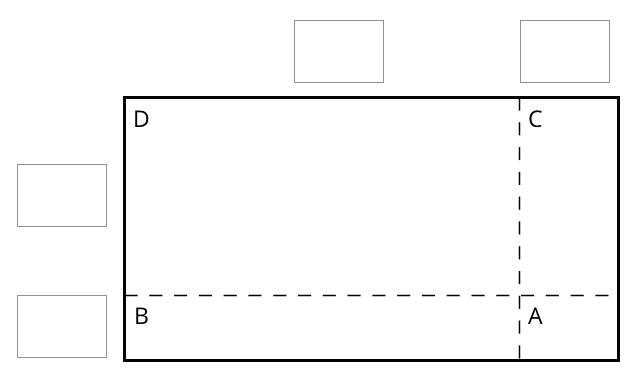
- Decompose each number into its base-ten units (ones, tenths, etc.) and write them in the boxes on each side of the rectangle.
- Label Regions A, B, C, and D with their areas. Show your reasoning.
- Find the product that the area diagram represents. Show your reasoning.
-
Here are two ways to calculate \((2.5) \boldcdot (1.2)\). Each number with a box gives the area of one or more regions in the area diagram.
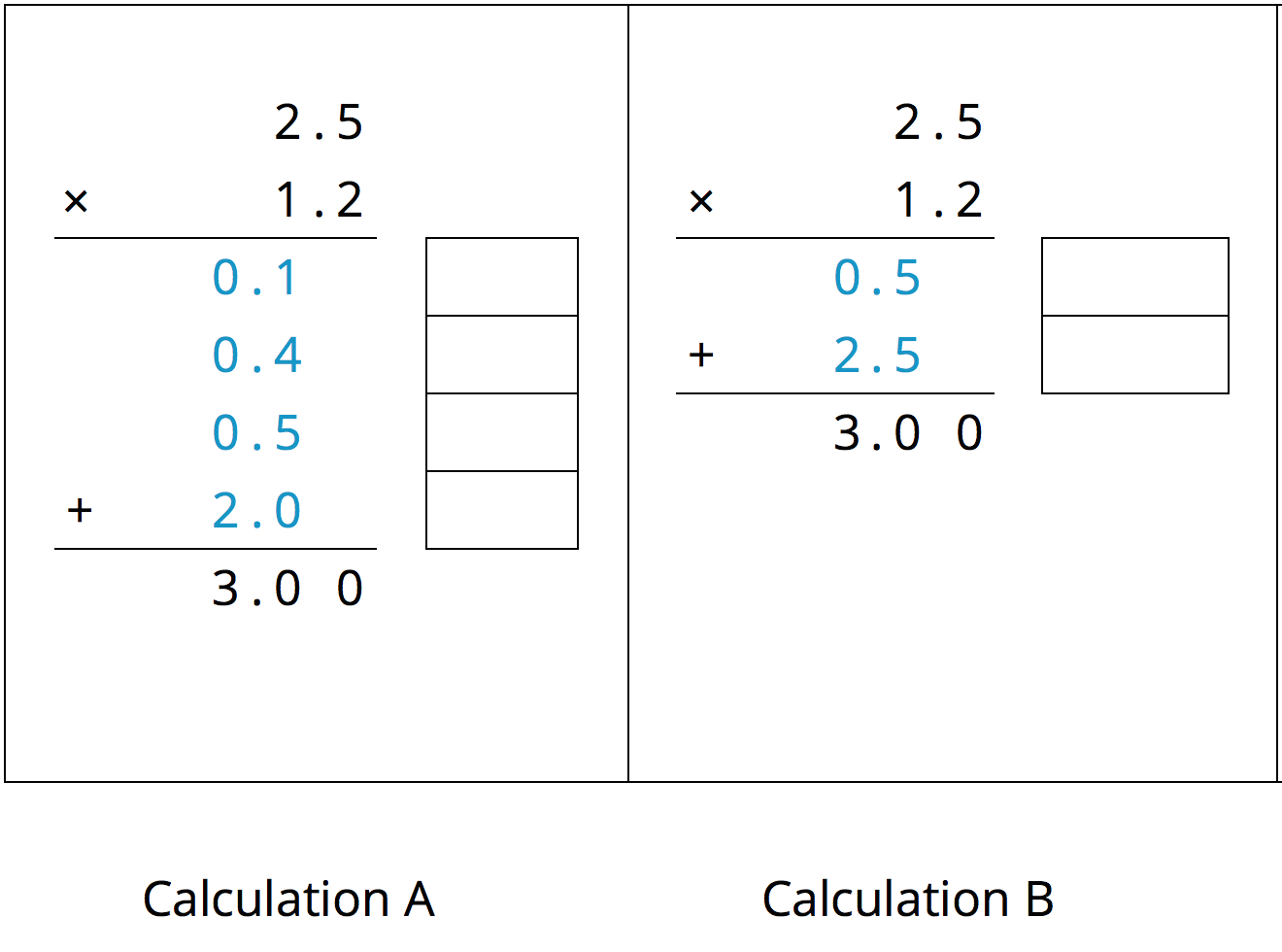
-
In the boxes next to each number, write the letter(s) of the corresponding region(s).
-
In Calculation B, which two numbers are being multiplied to obtain 0.5?
Which numbers are being multiplied to obtain 2.5?
-
17.3: Calculating Products of Decimals
-
A common way to find a product of decimals is to calculate a product of whole numbers, then place the decimal point in the product.
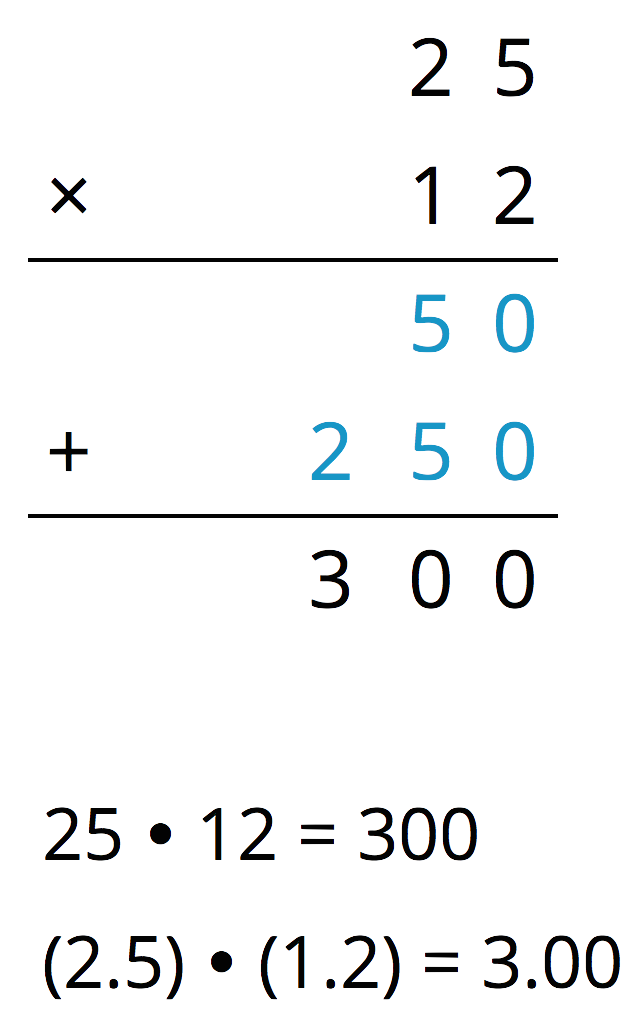
Here is an example for \((2.5) \boldcdot (1.2)\).
Use what you know about decimals and place value to explain why the decimal point of the product is placed where it is.
-
Use the method shown in the first question to calculate each product.
- \((4.6) \boldcdot (0.9)\)
- \((16.5) \boldcdot (0.7)\)
-
Use area diagrams to check your earlier calculations. For each problem:
- Decompose each number into its base-ten units and write them in the boxes on each side of the rectangle.
- Write the area of each lettered region in the diagram. Then find the area of the entire rectangle. Show your reasoning.
-
\((4.6) \boldcdot (0.9)\)

-
\((16.5) \boldcdot (0.7)\)

-
About how many centimeters are in 6.25 inches if 1 inch is about 2.5 centimeters? Show your reasoning.
17.4: Practicing Multiplication of Decimals
-
Calculate each product. Show your reasoning. If you get stuck, consider drawing an area diagram to help.
-
\((5.6) \boldcdot (1.8)\)
-
\((0.008) \boldcdot (7.2)\)
-
-
A rectangular playground is 18.2 meters by 12.75 meters.
- Find its area in square meters. Show your reasoning.
- If 1 meter is approximately 3.28 feet, what are the approximate side lengths of the playground in feet? Show your reasoning.
-
Write the following expressions as decimals.
- \(1-0.1\)
- \(1-0.1+10-0.01\)
- \(1-0.1+10-0.01+100-0.001\)
- Describe the decimal that results as this process continues.
- What would happen to the decimal if all of the addition and subtraction symbols became multiplication symbols? Explain your reasoning.
Summary
Suppose that we want to calculate the product of two numbers that are written in base ten. To explain how, we can use what we know about base-ten numbers and areas of rectangles.
Here is a diagram of a rectangle with side lengths 3.4 units and 1.2 units.
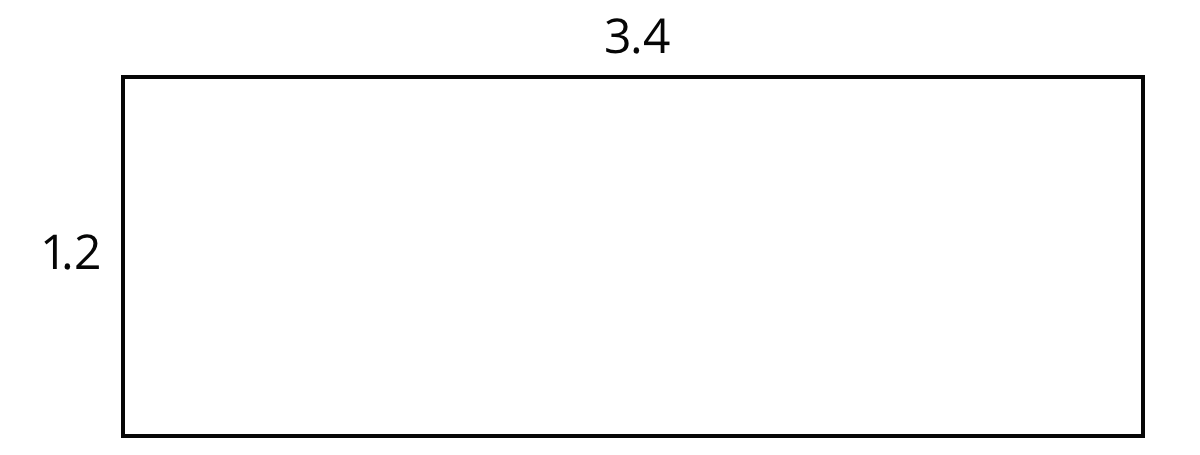
Its area, in square units, is the product
\((3.4) \boldcdot (1.2)\)
To calculate this product and find the area of the rectangle, we can decompose each side length into its base-ten units, \(3.4 = 3 + 0.4\) and \(1.2= 1 + 0.2\), decomposing the rectangle into four smaller sub-rectangles.
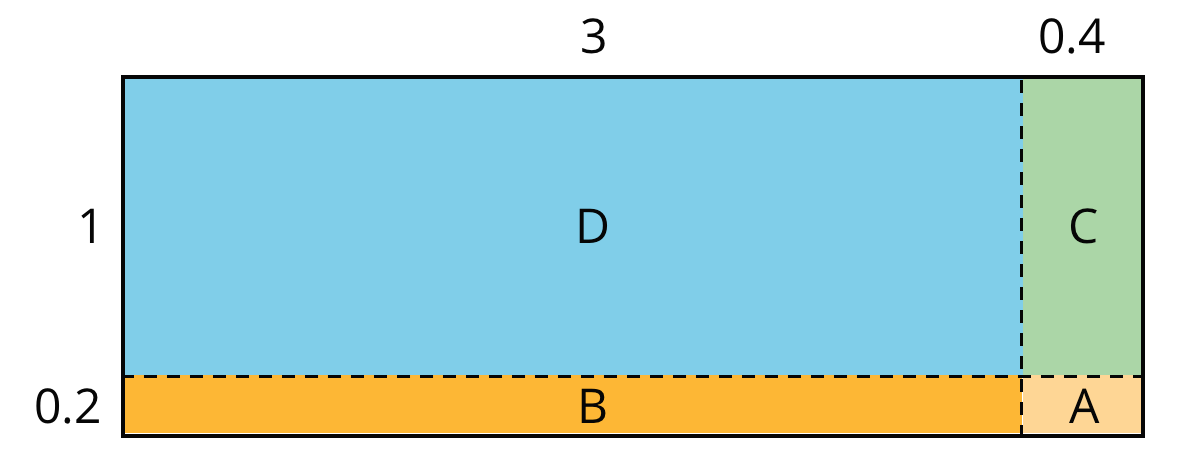
We can rewrite the product and expand it twice:
\(\begin{align} (3.4) \boldcdot (1.2) &= (3 + 0.4) \boldcdot (1 + 0.2)\\ &=(3 + 0.4) \boldcdot 1 + (3 + 0.4) \boldcdot 0.2\\ &=3 \boldcdot 1+ 3 \boldcdot (0.2)+ (0.4) \boldcdot 1 + (0.4)\boldcdot (0.2)\\ \end{align}\)
In the last expression, each of the four terms is called a partial product. Each partial product gives the area of a sub-rectangle in the diagram. The sum of the four partial products gives the area of the entire rectangle.
We can show the horizontal calculations above as two vertical calculations.
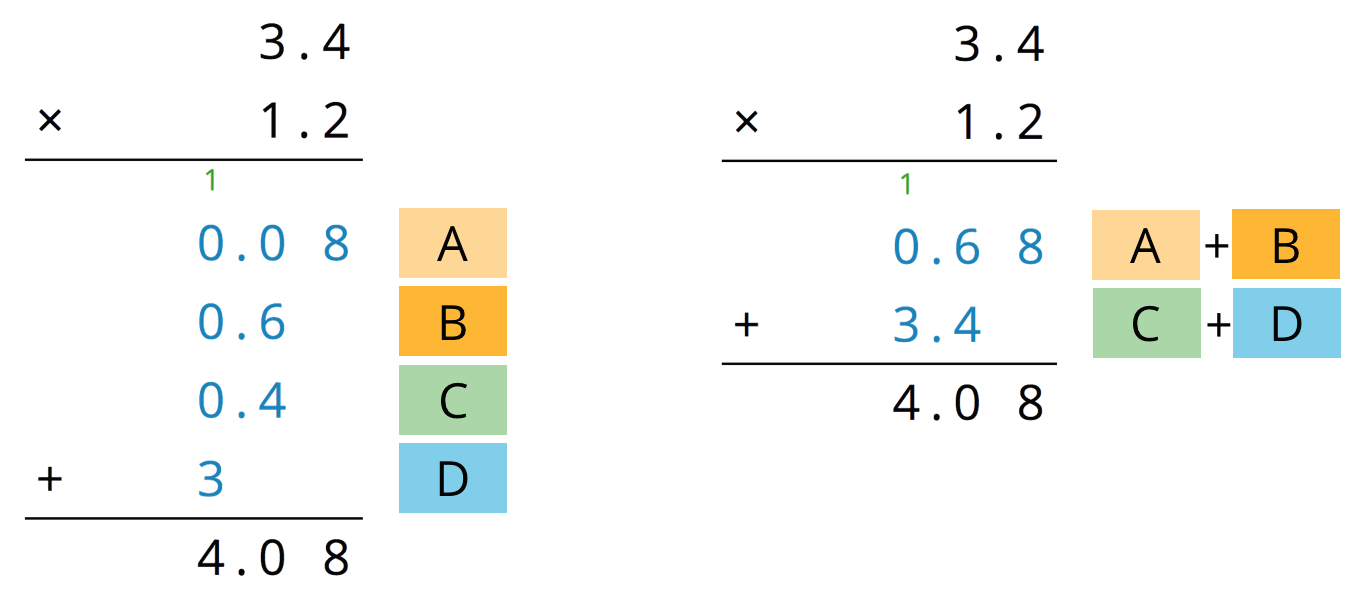
The calculation on the left is an example of the partial products method. It shows the values of each partial product and the letter of the corresponding sub-rectangle. Each partial product gives an area:
- A is 0.2 unit by 0.4 unit, so its area is 0.08 square unit.
- B is 3 unit by 0.2 unit, so its area is 0.6 square unit.
- C is 0.4 unit by 1 unit, so its area is 0.4 square unit.
- D is 3 units by 1 unit, so its area is 3 square units.
- The sum of the partial products is \(0.08 + 0.6 +0.4+ 3\), so the area of the rectangle is 4.08 square units.
The calculation on the right shows the values of two products. Each value gives a combined area of two sub-rectangles:
- The combined regions of A and B have an area of 0.68 square units; 0.68 is the value of \((3 + 0.4) \boldcdot 0.2\).
- The combined regions of C and D have an area of 3.4 square units; 3.4 is the value of \((3 + 0.4) \boldcdot 1\).
- The sum of the values of two products is \(0.68 + 3.4\), so the area of the rectangle is 4.08 square units.